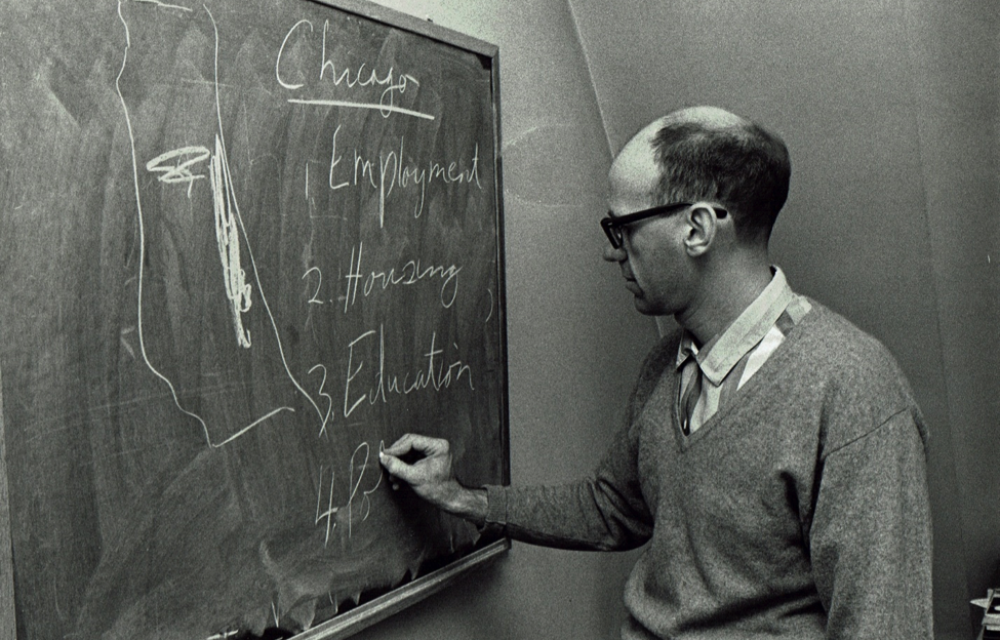Synopsis by Donald Planey
In the unpublished manuscript “The Menace of American Fascism,” Baron explores the possible historical conditions under which the United States could potential undergo a turn towards fascist politics. Using and clarifying his approach to radical institutionalism, Baron conceptualizes the U.S. social fabric as a set of class and race formations set against the backdrop of the moving terrain of the post-war labor market. To explore the future dangers of a reactionary turn in American politics, Baron examines the politics and social base of the 1968 George Wallace campaign, as well as the reasons for Nixon’s ultimate victory over Hubert Humphrey. Instead of the dominant contemporary approach to radical institutionalism represented by C. Wright Mills, which was dedicated to uncovering the “power elites” within the U.S. business-state nexus, Baron’s institutionalism was dedicated to studying the ways in which different class-race formations attempted to secure their social standing amid an unraveling post-war social contract.
In Baron’s analysis, post-war growth in inequality is concomitant with an increasing sense of distance from the U.S. political system among Americans. Due to racial divides within the United States, this alienation has manifested in different ways between the white and Black working classes. While the Black working class was at the height of its support for civil rights and Black liberation, the white working class was torn between economic populism and white supremacy. While Baron notes that Wallace’s politics resemble the original European fascist movements in key ways, he views the U.S. bourgeoisie as equally complicit in opening up possibilities for fascist reaction against Black liberations and growing white impoverishment.
Fascism, in Baron’s understanding, is enabled by structural and institutional conditions at specific junctures in a nation’s economic development, not just the presence of fascist ideology among certain individuals. The U.S.’s founding mythology valorizes the white yeoman entrepreneur and worker. However, white conservatism’s free market convictions (embodied by Barry Goldwater) also inhibited the formation of an effective social base for an American fascist movement, by throwing cold water on the desire of more Wallace-type conservatives to construct a supportive welfare state for white Americans. However, these did not simply reflect different factions of white conservatism. White Wallace-style populists still viewed themselves as committed to a free market. But if mainstream elites were to begin valuing “security” over freedom, and white populists were able to square the circle of white-only egalitarianism, a space could open up for a genuine American fascism within the U.S. civil society.

